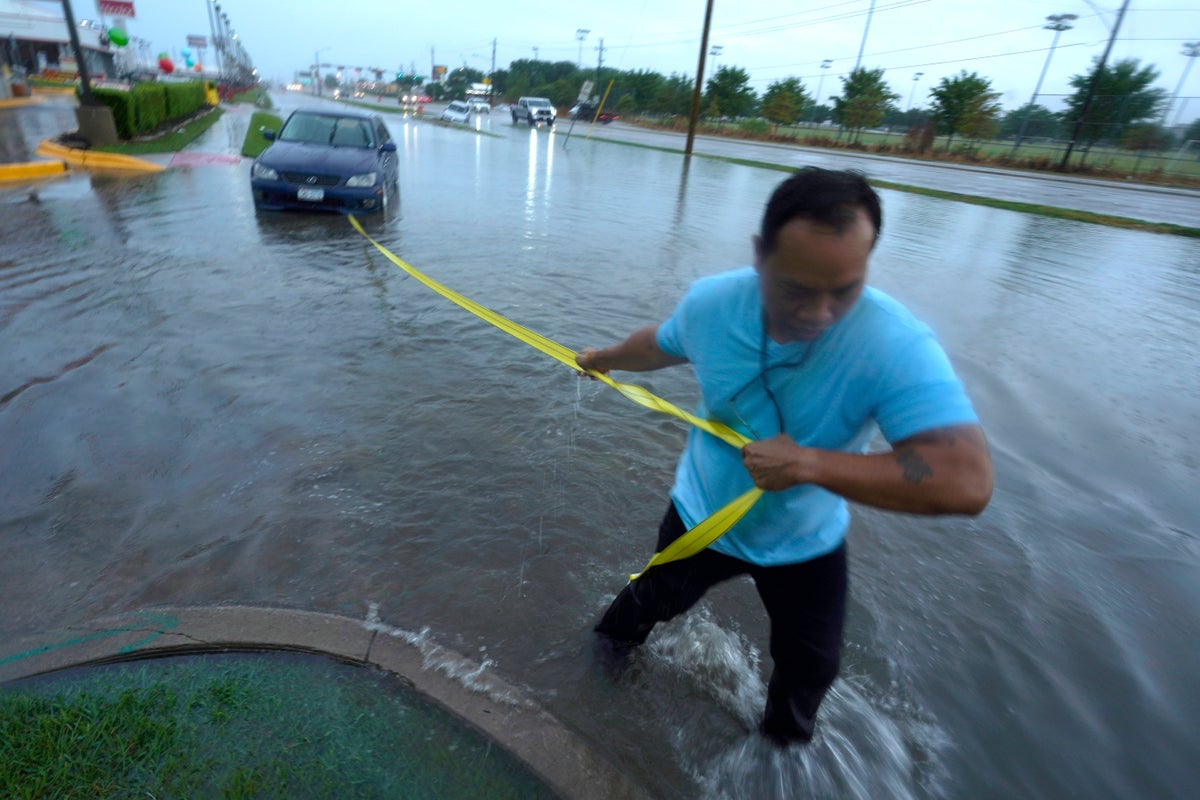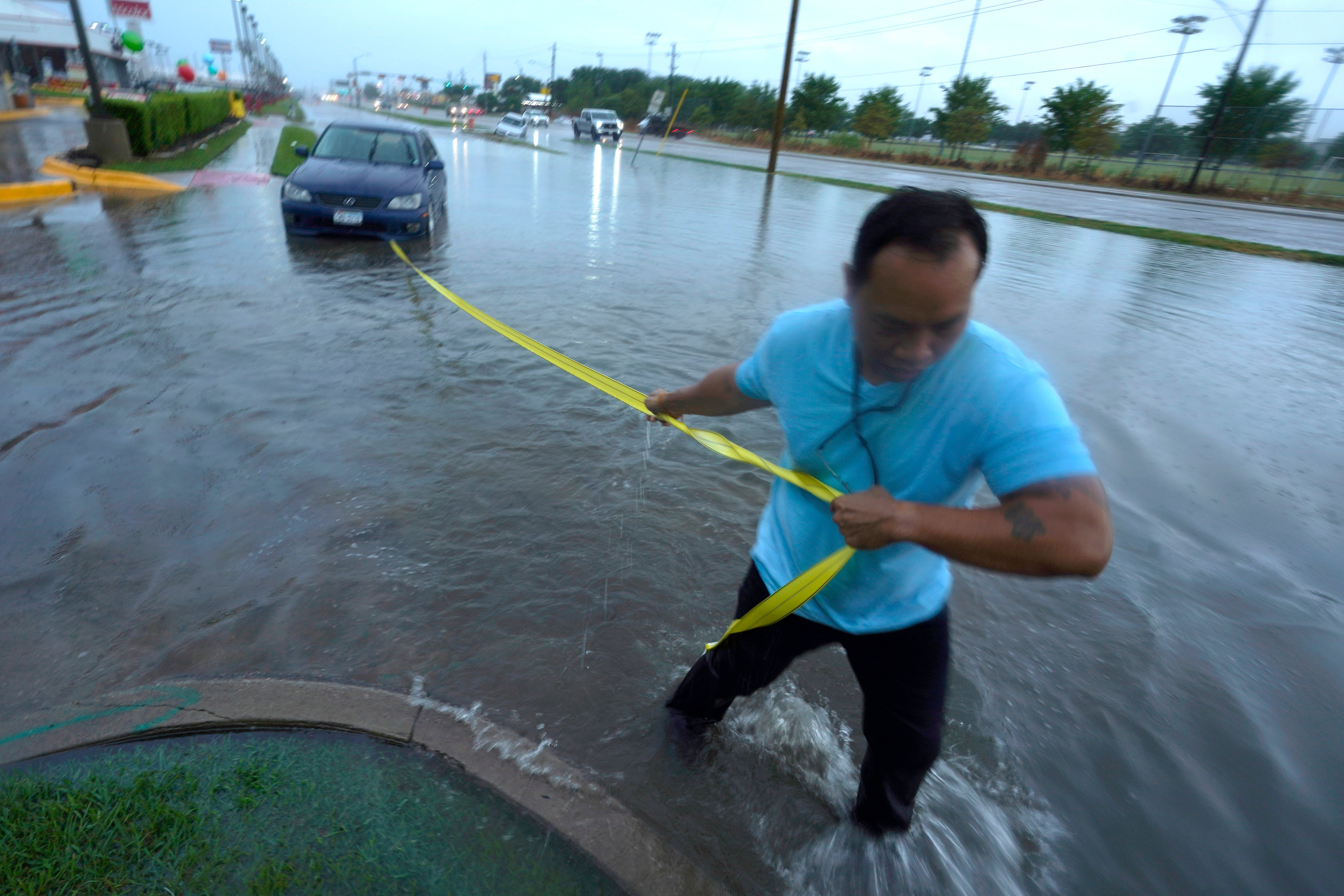
Intense storms pounded the Dallas area overnight on Monday, flooding streets and homes and leading to emergency water rescues.
The National Weather Service (NWS) reported that over 10 inches (25 centimetres) of rain had fallen in some areas surrounding the major Texas city.
Dallas typically sees about eight inches (20cm) of rain all summer. It means that at least three months’ worth of rain fell in just one night, ABC News adds.
“The Dallas-Fort Worth area was pretty much ground zero for the heaviest rain overnight,” said Daniel Huckaby, a meteorologist with the National Weather Service.
“We’ve been in drought conditions, so the ground soaked up a lot of it but when you get that much rain over that short a period of time, it’s certainly going to cause flooding, and that’s what we saw, definitely in the urban areas here,” Huckaby said.
Dallas and Fort Worth emergency officials reported dozens of calls related to rescues from high water.
Videos and photos showed people swimming through flooded highways, leaving their cars behind. Some people told NBC 5 News that they had to quickly escape their cars as water started filling up the vehicle.
Huckaby said that the flooding started overnight on streets and interstates.
“It fell very, very quickly,” Huckaby said. “We had some locations there in Dallas that had more than three in (7.6 cm) of rain even in one hour.”

He noted that with so much concrete in urban areas, “there’s just only so much that the drain systems can handle.”
In some places, enough rain fell to qualify as a one-in-1,000-year flood event, The Washington Post reported.
Around White Rock Lake in Dallas, standing water covered some grassy fields. And after months of being dried by hundred-degree temperatures and almost no rain, the lake’s concrete spillway was engulfed by a torrential flow.
The storms will continue to move eastward, but a lot more rain is still possible. Parts of the Dallas area will see up to eight more inches, NWS says. A flood is in effect for the entire region until Monday evening. Parts of Texas south and east of the city are under the more severe “flash flood warning”.
Flash floods are expected to get more common as the climate crisis deepens.
A warmer planet will bring storms that drop a lot of rain all at once. One study earlier this year found that as these more intense storms get more frequent, many parts of the county could experience more flash flooding.
And this summer has brought flooding to many parts of the country — as cities like St. Louis and Las Vegas have been washed through, while devastating flooding in rural parts of eastern Kentucky killed at least 38 people.
AP contributed to this report







